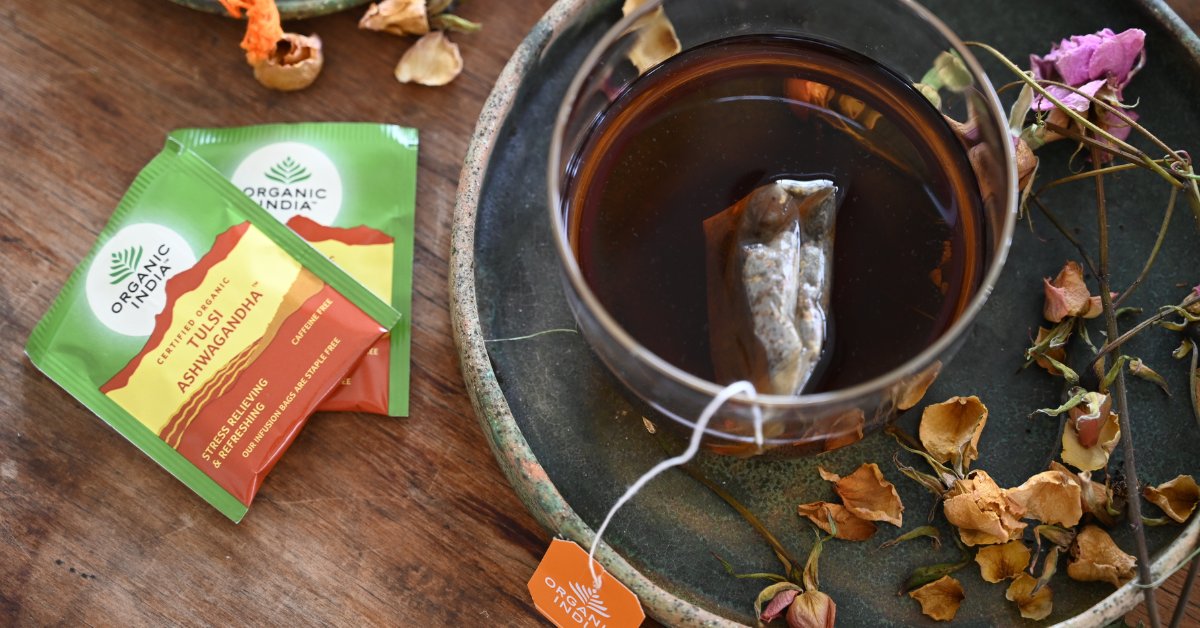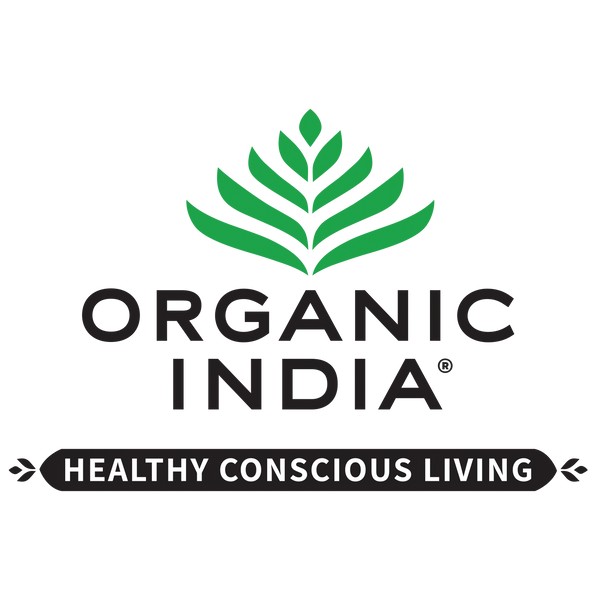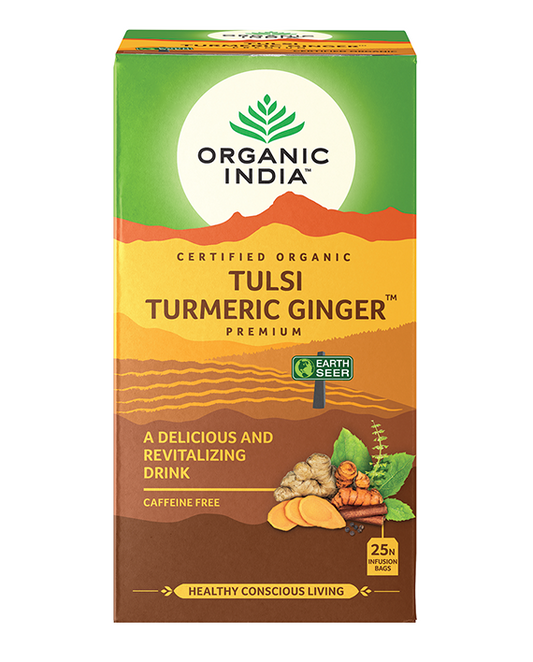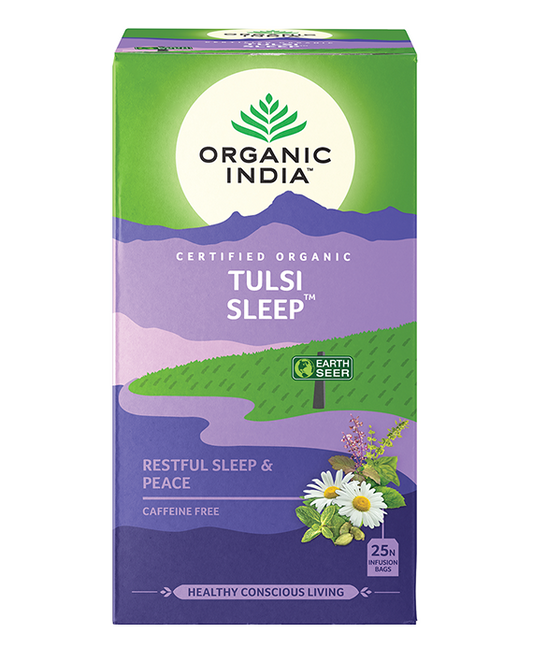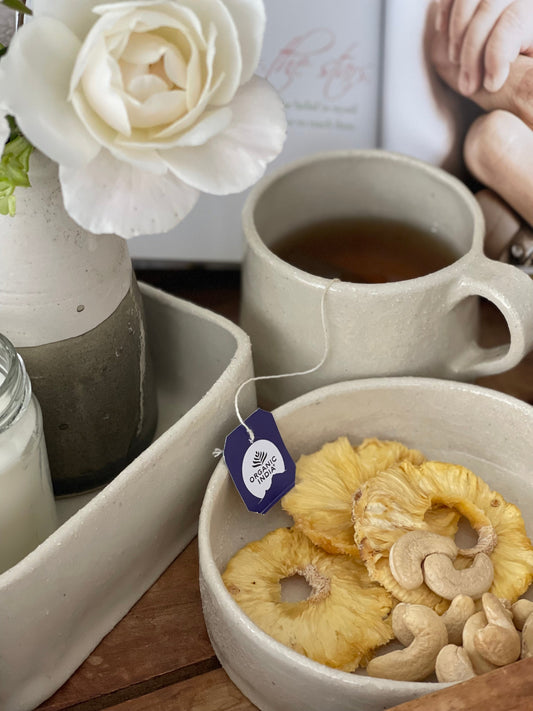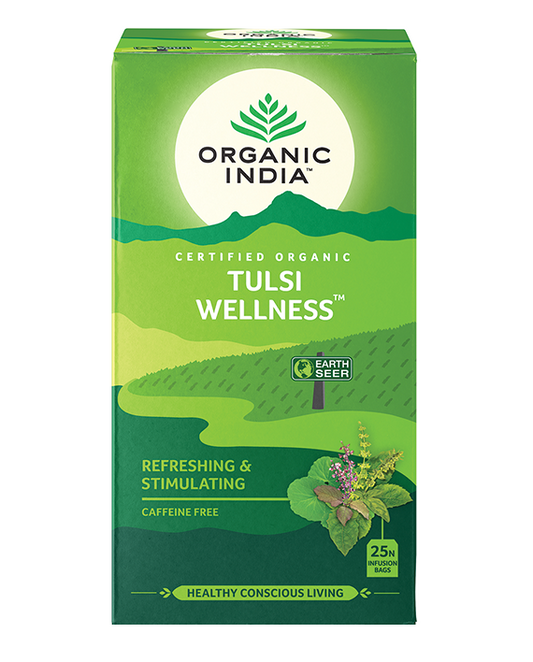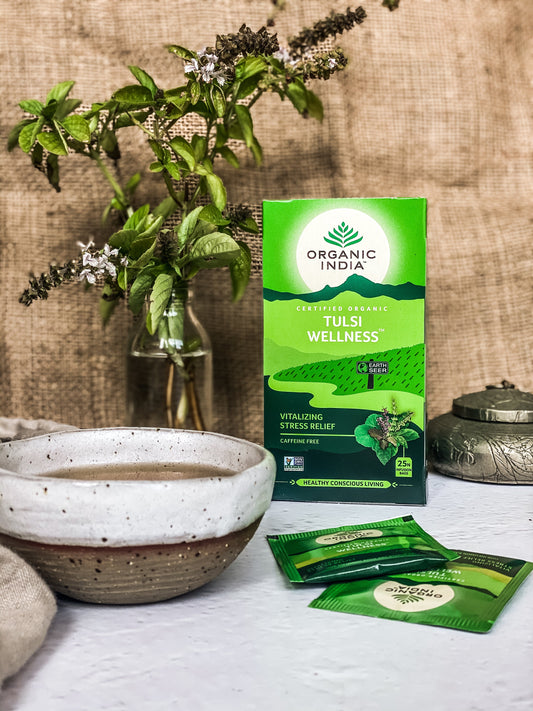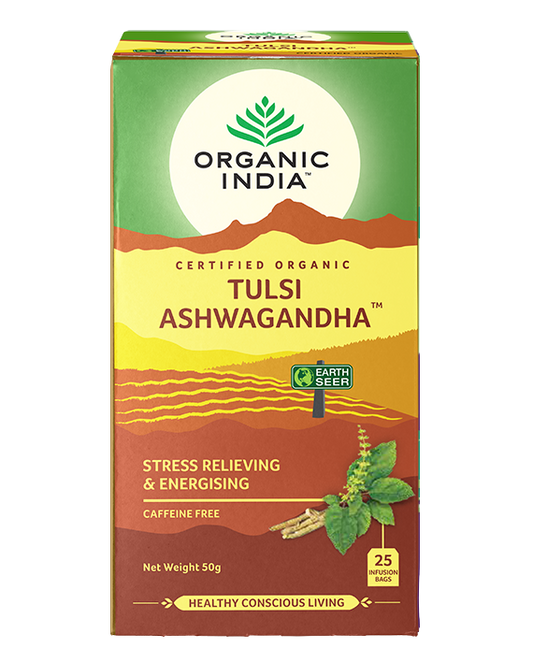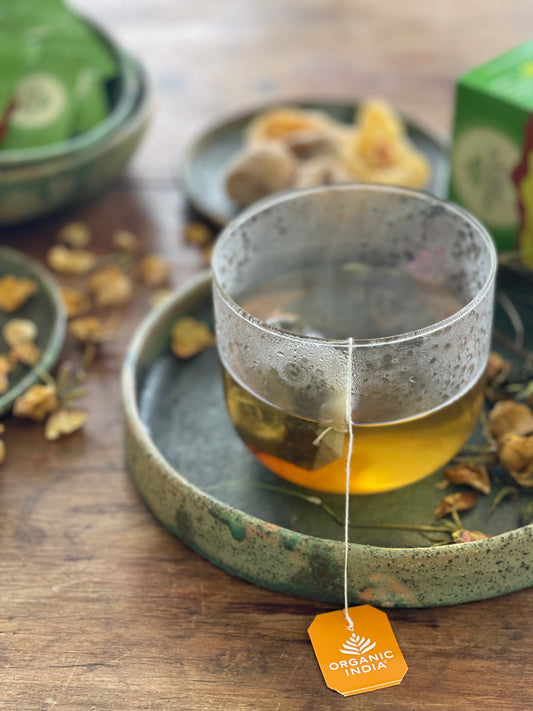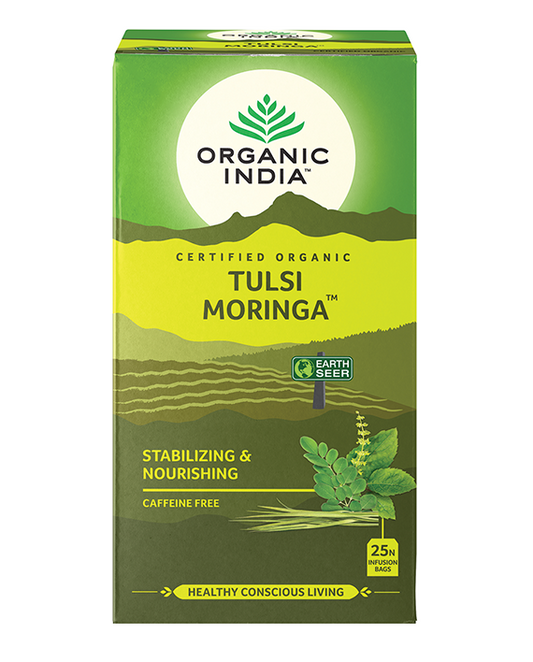This week we’re excited to introduce our certified organic Wheat Grass Powder to Australia. This Wheatgrass Powder is naturally rich in chlorophyll, vitamins, minerals, essential nutrients and amino acids, which can revitalise and help to promote healthy alkalinity levels. Wheatgrass can support a healthy immune system, the normal detoxification process, healthy energy levels and promotes overall well-being.
It may taste like freshly cut grass, but it’s, in fact, a health boost in a glass. That’s wheatgrass for you: intense and full of goodness that will make your cells jump for joy. We take a closer look at what it is and why you should consider adding it to your daily routine.
What is Wheatgrass?
Wheatgrass is the young grass shoots of the Triticum Aestivum plant, more commonly known by the name of wheat plant. It’s part of the cereal grass family, joining barley, rye and oat grasses. You can grow wheatgrass at home: outside in warm climates and inside in cool ones. Others buy it as a liquid or powder supplement. Nowadays wheat is widely cultivated all around the world, making it one of the most wide-spread staple plant foods there is.
Wheatgrass was first introduced to the West in the 1930s. It’s native to Central Europe, the Balkans, and modern-day Turkey. According to various archaeological studies, the wheat as we know today actually originated in the southeast Turkey.
Tracing the Rise of Wheatgrass
The history of wheatgrass use goes all the way back to the Ancient Egypt and early Mesopotamian civilisations who used it for energy and to improve their vitality.
Wheatgrass consumption as we know it today set off at the beginning of the 20th century, with a chemist Charles Franklin Schnabel, nicknamed “Mr Wheatgrass”, or the Father of Wheatgrass. Schnabel started making a powdered form of the plant as, for him, it represented a crucial and important dietary supplement for his family and neighbours. His discovery was a success but lasted only a short time due to the rise of pharmaceutical companies. It wasn’t until the 1960s when wheatgrass juice started to get attention when Ann Wigmore, a raw food advocate popularised the drink. (4)
The full benefits of wheatgrass are still unknown as there hasn’t been a lot of scientific research into the benefits of this plant. But wheatgrass continues to be popular through the years from word of mouth testimonials who swear by wheatgrass and its positive effects and improvements to their health and mental state.
What’s all the fuss about?
Wheatgrass can be powerful due to the number of nutrients present in the plant. Just 4 grams of this green magic powder can load your body on vitamins (some of which are antioxidants), minerals and other nutrients that make your cells breathe and explode with health and positive energy (1). Wheatgrass contains:
- An extremely rich source of chlorophyll (about 70%)
- Contains numerous amino acids, enzymes, and phytochemicals
- Rich source of vitamins C, E (alpha-tocopherol), A, B1, B2, B3, B6, and K
- Rich source of minerals: zinc, selenium, phosphorous, potassium, calcium, iodine, iron, magnesium, manganese
- Loaded with dietary fibre
- A good source of protein
The role of Chlorophyll in our lives
Chlorophyll is that part of wheatgrass that makes it the superfood it is. Since chlorophyll is responsible for the absorption of energy from sunlight, you could poetically say that by drinking wheatgrass you’re actually drinking sunshine – as well as its energy and radiance. As a molecule, Chlorophyll is the green pigment that provides plants with their green colour. To sum up Chlorophyll’s role, Chlorophyll is to plants what blood is to humans. So why do we need chlorophyll if we’re not plants?
Dr Richard Willstatter, a German chemist, made an important link between chlorophyll and hemoglobin, a protein that carries oxygen around our bodies. Willstatter discovered that chlorophyll is valuable to the human body for two reasons:
- Its structure is similar to that of hemoglobin
- It can boost hemoglobin production in our bodies.
Why is this important? Simply because the more oxygen our cells get, the healthier we are.
Chlorophyll has also been found to alkalise the blood, which is one of the best weapons the body can have fighting various diseases and illnesses. This is how chlorophyll boosts the immune system, improves energy levels and our general mood. Think about it, it all comes in a small glass of green tonic.
Wheatgrass benefits
Wheatgrass, with all of its components, may boost the health of our cells, which are in fact the core of our bodies. Apart from this, Wheatgrass has been used throughout history for benefits such as:
- Boosting the immune system*
- Promoting healthy Alkalinity levels*
- Supporting digestion*
- Reducing inflammation of the colon (3)*
- Aiding menstrual pain*
- Reducing fatigue*
- Improving energy*
- Aiding with anxiety and stress*
Remember most of these benefits are still from word of mouth testimonials rather than scientific research.
How is wheatgrass made?
Wheatgrass can be grown in your own apartment on a tray or as a crop on a field. There are claims, however, that tray-grown wheatgrass doesn’t contain such a high level of nutrients as a field-grown or even the powder. Unless you want to experiment a bit, a powder may be the best and most practical approach as it can be stored and lasts for an extended amount of time.
Wheatgrass is grown and harvested at the jointing stage. It is then dehydrated at a low temperature and make it into a powder. The whole procedure must be very careful and thorough because only by following the exact steps, the nutrients and enzymes of the wheatgrass can be preserved properly.
How to consume wheatgrass?
Now onto the fun stuff. It’s very easy to include wheatgrass in your diet. It can be consumed in a form of powder, as a supplement, or as a fresh produce, and in tablets. There are a few ways on how to consume Wheatgrass on a daily basis: tablets and fresh wheatgrass juice are just two of them. There’s always the option of adding a teaspoon of wheatgrass powder to a glass of water and drinking it as it is, although the taste might not be too appealing. Most people prefer adding their Wheatgrass powder to either to a smoothie bowl or to their daily smoothie.
Here’s a Wheatgrass Powder recipe we think you may enjoy:
Creamy Green Energy Boost smoothie
As mentioned, Adding wheatgrass to smoothies can be a practical way to enjoy it. The sweetness and taste of fruit tones down the grassy flavour and it makes it easier to drink it. Add whatever fruits you like best. Here is a recipe that is quite tasty, but feel free to adapt it to your palate.
Ingredients
- 1 mango, peeled and cubed
- 1 peach, cubed
- A few leaves of fresh mint
- 1 teaspoon ORGANIC INDIA Wheat Grass Powder
- A splash or two of water
- 1 tablespoon chia seeds
- 2 ice-cubes (optional)
Process
- Add everything to a blender
- Blend well
- Pour into a glass
- Drink for your cells’ sake and an extra energy kick!
